
Copernical Team
Coolant leaked from Russian part of ISS, crew safe: Roscosmos
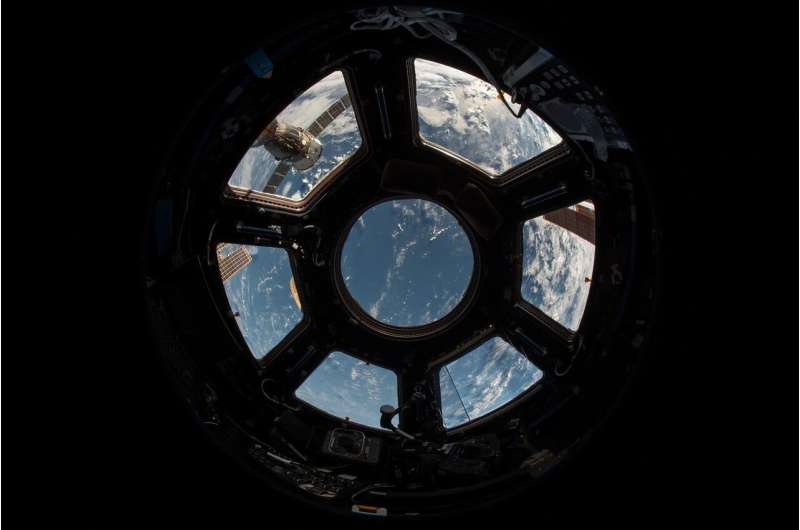
Liquid has leaked from the Russian portion of the International Space Station but the crew are not in any danger, the Russian space agency Roscosmos said on Monday.
"The Nauka module of the Russian segment of the ISS has suffered a coolant leak from the external (backup) radiator circuit, which was delivered to the station in 2012," Roscosmos said on Telegram suggesting there was no danger to the orbiting laboratory.
Last month, two Russian cosmonauts and an American astronaut landed back on Earth after spending a year at the ISS.
The three men had traveled on a Russian Soyuz to the ISS last year, in a mission that was meant to last only six months.
But the Soyuz suffered a leak probably due to impact from a tiny meteorite, so Moscow sent another rocket with no crew onboard.
The Russians and American then carried out the mission of the crew that was due to replace them.
The trio spent a year on the ISS—a rare venue for cooperation between the US and Russia—as tensions between Washington and Moscow intensified over the conflict in Ukraine.
Vega flight takes satellites to space
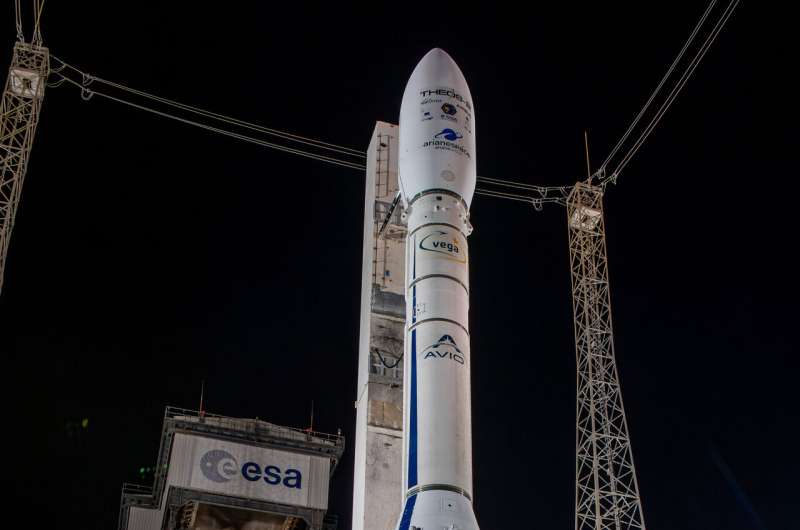
Today (Oct. 10) at 22:36 local time (02:36 BST, 03:36 CEST) the 23rd Vega flight saw its two main satellites launched and released into Earth orbit. The rocket's main passengers were the Earth observing THEOS-2 satellite and the meteorological satellite Triton.
THEOS-2 (THailand Earth Observation System-2) is an observation satellite manufactured by Airbus for the Geo-Informatics and Space Technology Development Agency of Thailand. THEOS-2 is the largest of the two satellites in the series and will provide the Ministry of Agriculture of Thailand with information on water resources, weather and land use for planning and management.
Triton (formerly known as FORMOSAT-7R) is a Taiwan Space Agency (TASA) satellite that will collect signals that bounce off the sea surface to help scientists calculate wind field over our oceans. This data will be shared with Taiwan's Central Weather Administration, contributing to the forecast of typhoon intensity and their trajectory.
The satellites were released in a sun-synchronous orbit, meaning they will fly over the same spot on Earth at the same time each day—following the sun.
Connect to ESA Careers Day on 9 November

If you are interested in applying for a job at ESA, curious to know what opportunities we have for you or would like to hear about the projects our teams are working on, then mark your calendar for 9 November 2023! For this fully online event, we will be streaming a programme packed full of sessions giving you an insider’s look at STEM careers at ESA.
Watch: Earth Explorer 11 Consultation
Watch: Earth Explorer 11 Consultation
On 10-11 October, follow the discussions on the candidate missions for ESA's eleventh Earth Explorer at the User Consultation Meeting
European space firms set specifications for optical links
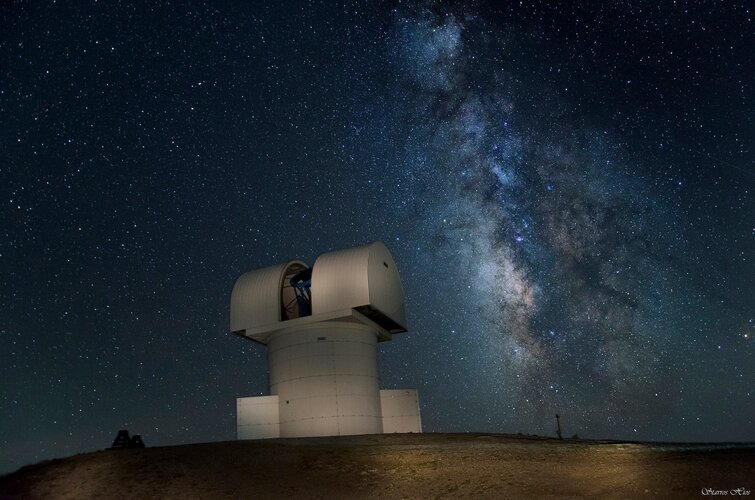
Sending vast quantities of data between satellites speedily and securely means using light to communicate. Now a group of space companies, research centres and universities working with ESA has established a series of specifications on how exactly satellites should use light to talk to one another – and to link to their ground stations.
Wanted: bright ideas to develop the lunar economy
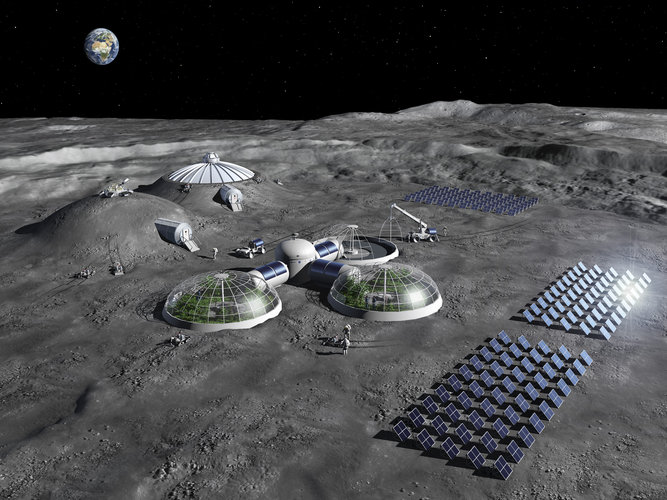
ESA is calling for visionary ideas for how to use a constellation of communication and navigation satellites around the Moon to establish lunar businesses – and unlock opportunities on Earth.
Metal-loving microbes could replace chemical processing of rare earths
 Rare earth elements power electric cars, wind turbines and smartphones. Retrieving these metals from raw ore requires processing with acids and solvents.
Now, Cornell scientists have characterized the genome of Shewanella oneidensis - a metal-loving bacteria with an affinity for rare earth elements - to replace the harsh chemical processing with a benign practice called biosorption.
Rare earth elements power electric cars, wind turbines and smartphones. Retrieving these metals from raw ore requires processing with acids and solvents.
Now, Cornell scientists have characterized the genome of Shewanella oneidensis - a metal-loving bacteria with an affinity for rare earth elements - to replace the harsh chemical processing with a benign practice called biosorption. THEOS-2 Airbus-built satellite for Thailand successfully launched
 The Airbus-built THEOS-2 Earth observation satellite has been successfully launched on a Vega rocket from Kourou, Europe's spaceport in French Guiana. The Geo-Informatics and Space Technology Development Agency of Thailand (GISTDA) selected Airbus as partner for its next-generation national geo-information system in 2018.
Jean-Marc Nasr, Head of Space Systems at Airbus, said: "This success
The Airbus-built THEOS-2 Earth observation satellite has been successfully launched on a Vega rocket from Kourou, Europe's spaceport in French Guiana. The Geo-Informatics and Space Technology Development Agency of Thailand (GISTDA) selected Airbus as partner for its next-generation national geo-information system in 2018.
Jean-Marc Nasr, Head of Space Systems at Airbus, said: "This success Vega flies to bring satellites to space
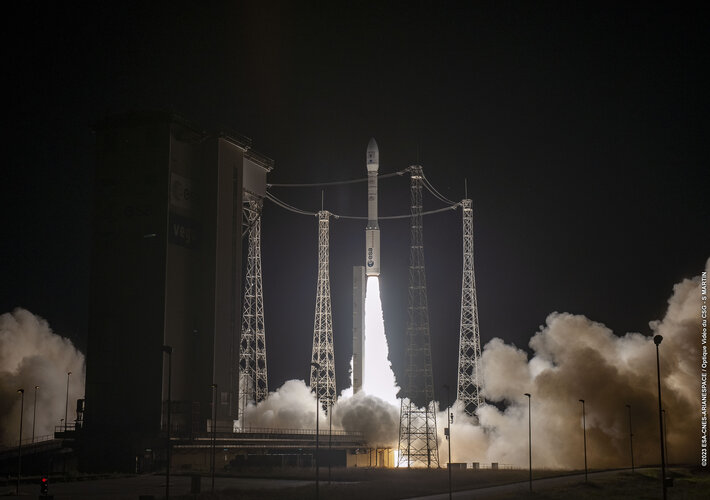
Astronomers discover first step toward planet formation
 Astronomers have gotten very good at spotting the signs of planet formation around stars. But for a complete understanding of planet formation, we also need to study examples where planet formation has not yet started.
Looking for something and not finding it can be even more difficult than finding it sometimes, but new detailed observations of the young star DG Taurus show that it has a s
Astronomers have gotten very good at spotting the signs of planet formation around stars. But for a complete understanding of planet formation, we also need to study examples where planet formation has not yet started.
Looking for something and not finding it can be even more difficult than finding it sometimes, but new detailed observations of the young star DG Taurus show that it has a s 